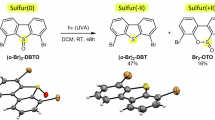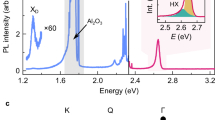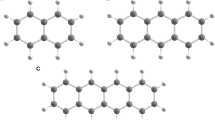Abstract
RECENT studies1 of the mobility ('metallic' character) of the unsaturation electrons within molecules containing conjugated double-bond systems suggest that solid conjugated compounds should exhibit the phenomenon of photoconductivity, provided that the unsaturation electrons can acquire enough energy to penetrate the potential barriers between adjoining molecules in the crystal lattice. Photoconductivity has, in fact, been observed in proteins2 and in certain dyes3. We have found that both naphthalene and anthracene, when melted and allowed to solidify between two platinum electrodes about 0·5 mm. apart, show weak photoconductivity when exposed in vacuo to the unfiltered radiation from a quartz mercury-vapour lamp. With applied voltages between 50 and 360, the photocurrents are detectable with a good galvanometer. They are of the order of magnitude of 10-8 amp., and are superimposed on a rather variable dark current. As in the case of dyes3, the photocurrents are quenched if air is admitted to the system.
Similar content being viewed by others
Article PDF
References
Bayliss, N. S., J. Chem. Phys., 16, 287 (1948).
Szent-Györgyi, A., Nature, 157, 875 (1946).
Vartanyan, A. T., J. Phys. Chem. (U.S.S.R.), 20, 1065 (1946).
Fowler, R. H., "Statistical Mechanics", 433 (Cambridge, 1936).
Author information
Authors and Affiliations
Rights and permissions
About this article
Cite this article
BAYLISS, N., RIVIERE, J. Photoconductivity of Naphthalene and Anthracene. Nature 163, 765 (1949). https://doi.org/10.1038/163765a0
Issue date:
DOI: https://doi.org/10.1038/163765a0
This article is cited by
-
Festk�rperphysik
Die Naturwissenschaften (1954)



